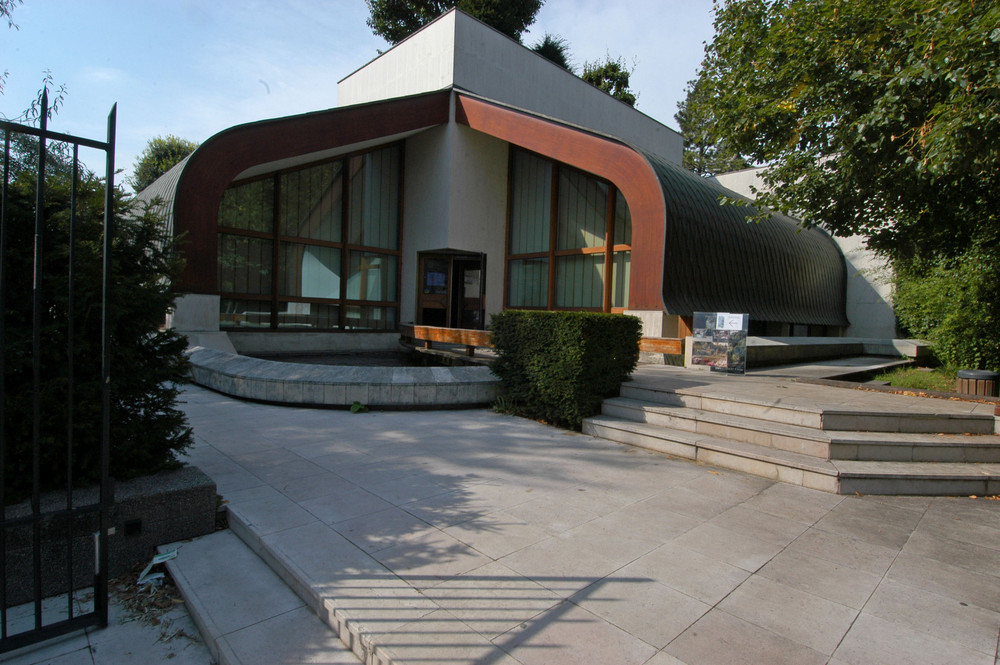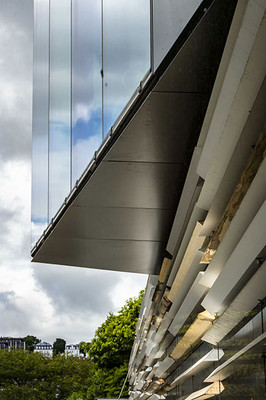A Brief History of the Site
The renaissance of the Albert Kahn museum is the result of a gradual historical preservation process for the site initiated since the end of the 1930s.
At the Beginning: the Albert Kahn “Campus”

At the end of the 19th century, Albert Kahn, then in full professional ascension, moved to a residential and verdant neighborhood in Boulogne-sur-Seine, where the Rothschild family already lived.
In 1895, he bought the lovely brick and stone townhouse that he had been renting for two years and whose surroundings he had landscaped as soon as his arrival. From 1895 to 1920, he patiently acquired the neighboring parcels and thus created a property of 4.2 hectares in order to create a garden reflecting his ideal, that of a harmonious world.
The Boulogne property, was, from the beginning, the epicenter of Albert Kahn’s exceptional project:
- A lively, but private, center for sociability,
- The headquarters for some of his foundations and the Around-the-World Society,
- A support base and laboratory for the Archives of the Planet,
- Jean Comandon’s biology laboratory,
- Printing house,
- Documentation center,
- Landscaped garden and screening room where the banker invited his guests for promenades and conferences on his influential project.
The Post-Kahn Era
After the bankruptcy of Albert Kahn, ruined by the stock market crash of 1929, the gardens and collections of images, as well as some of the laboratory equipment were bought as of 1936 by the Department of the Seine, which allowed the ruined patron to keep living in his home until his death on November 13, 1940. The gardens were opened for the first time to the public in 1937, on the occasion of the World’s Fair. In 1938, the site was turned into the Boulogne photography and cinematography library, which was used as a source of images by many famous names in cinema, such as Abel Gance for his film “I Accuse.”
In 1968, the Hauts-de-Seine Department, newly created, became the owner of the gardens and collections. It was around 1975, when a project to study and promote the collections saw the light of day. Under the direction of Jeanne Beausoleil, the complex became a departmental museum in 1986, before being awarded “Museum of France” status.

Significant restorations of the gardens were then undertaken, specifically relying on the rich collection of autochromes depicting the Boulogne property during Albert Kahn’s time. The first exhibit gallery (today incorporated into the new museum), designed by the architect Gérard Planes, was inaugurated in 1990, as well as the contemporary Japanese garden, the work of the landscaper Fumiaki Takano.
Moving towards a New Museum

At the turn of the 2010s, under the impetus of Patrick Devedjian, President of the Hauts-de-Seine Department, an ambitious reorganization and expansion project for the museum was undertaken by the department.
The purpose of the renovation was to improve the conservation and promotion conditions for the collections, specifically through the creation of a permanent visitor itinerary, as well as upgrade the site’s reception conditions, which already received an average of 120,000 visitors per year.
The architectural competition for the new museum was awarded to the Japanese architect Kengo Kuma in 2012 and construction started in 2015, the year the site was registered as a historical monument.
The new Albert Kahn Departmental Museum is now inscribed within the rich cultural fabric of the Hauts-de-Seine Cultural Valley, alongside major departmental facilities like Seine musicale, the Garden for Artistic and Design Professions (Sèvres, opening 2022) and the Museum of the Great Century (Saint-Cloud, opening 2025).
